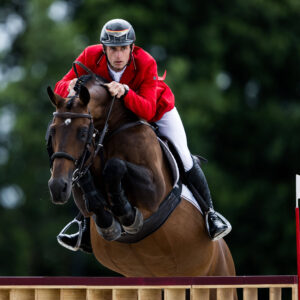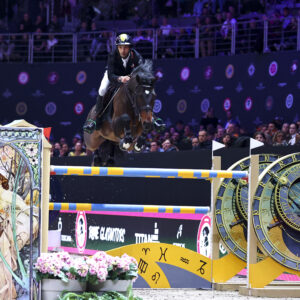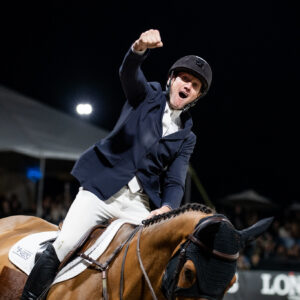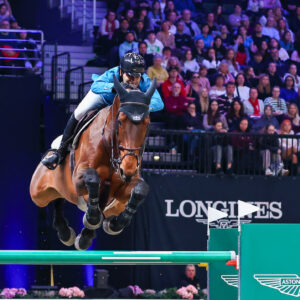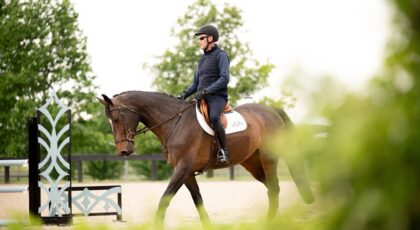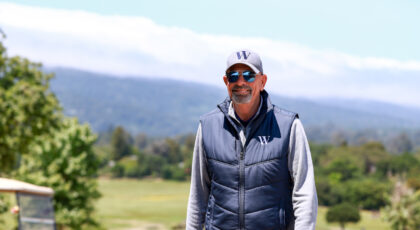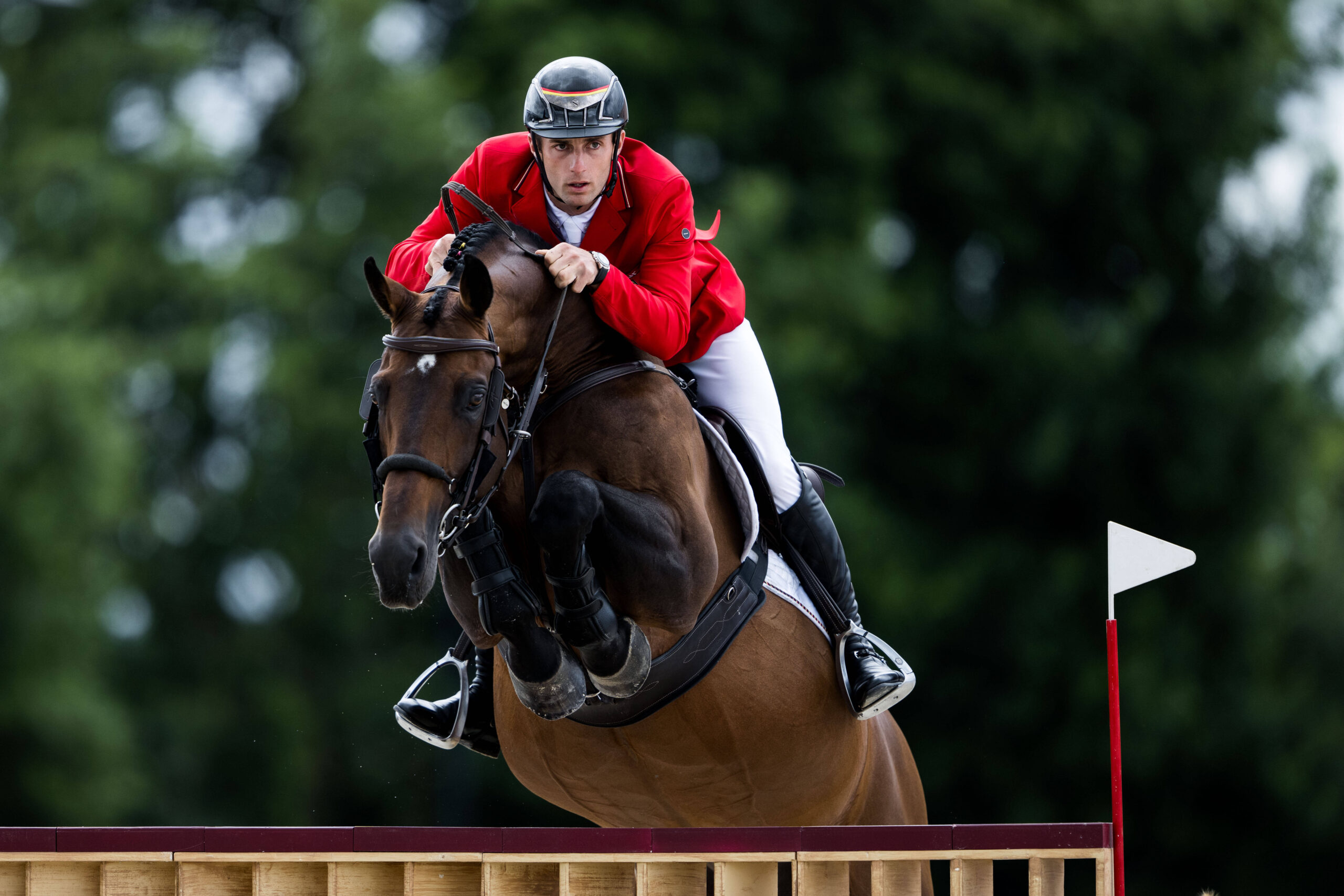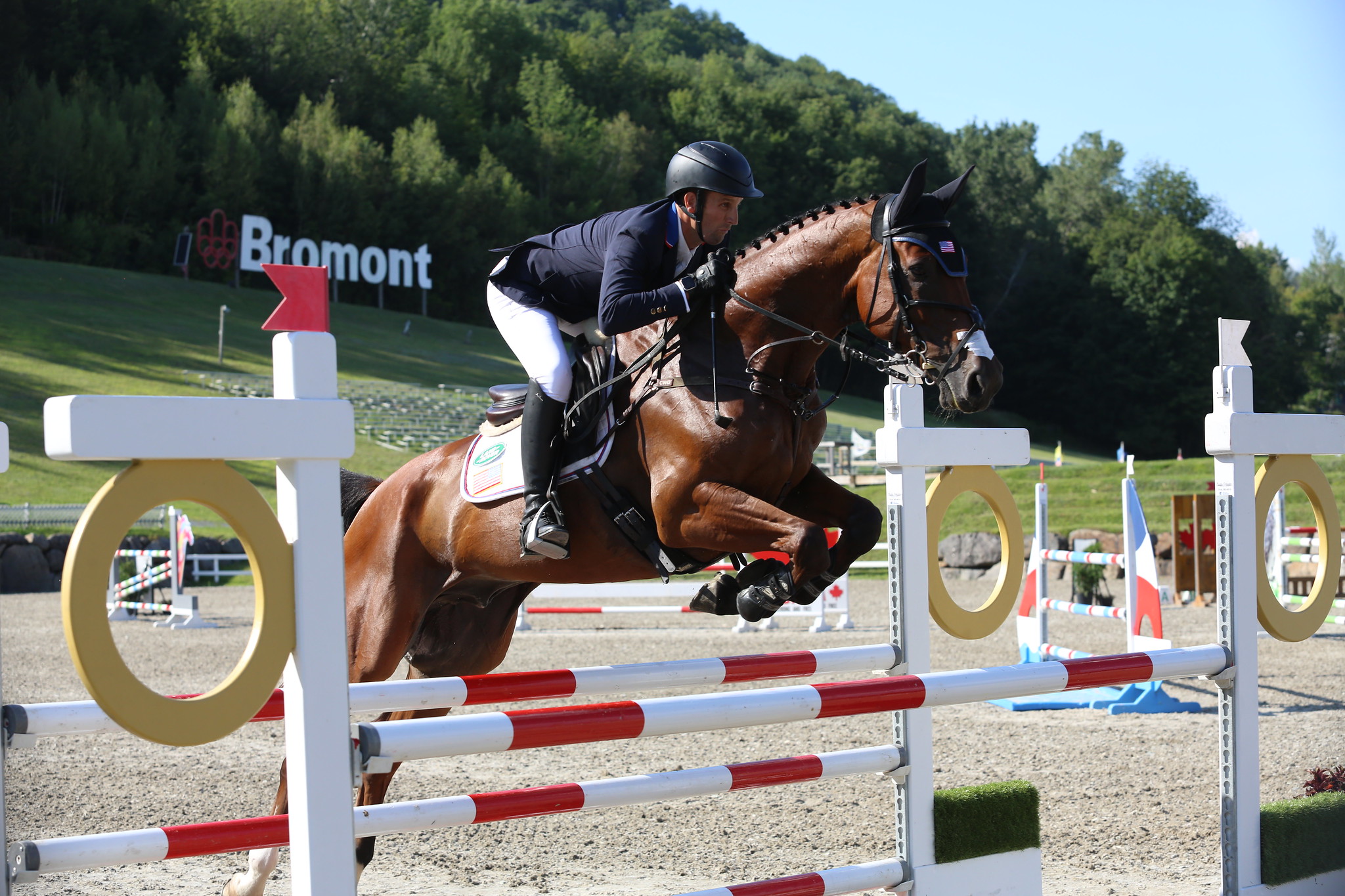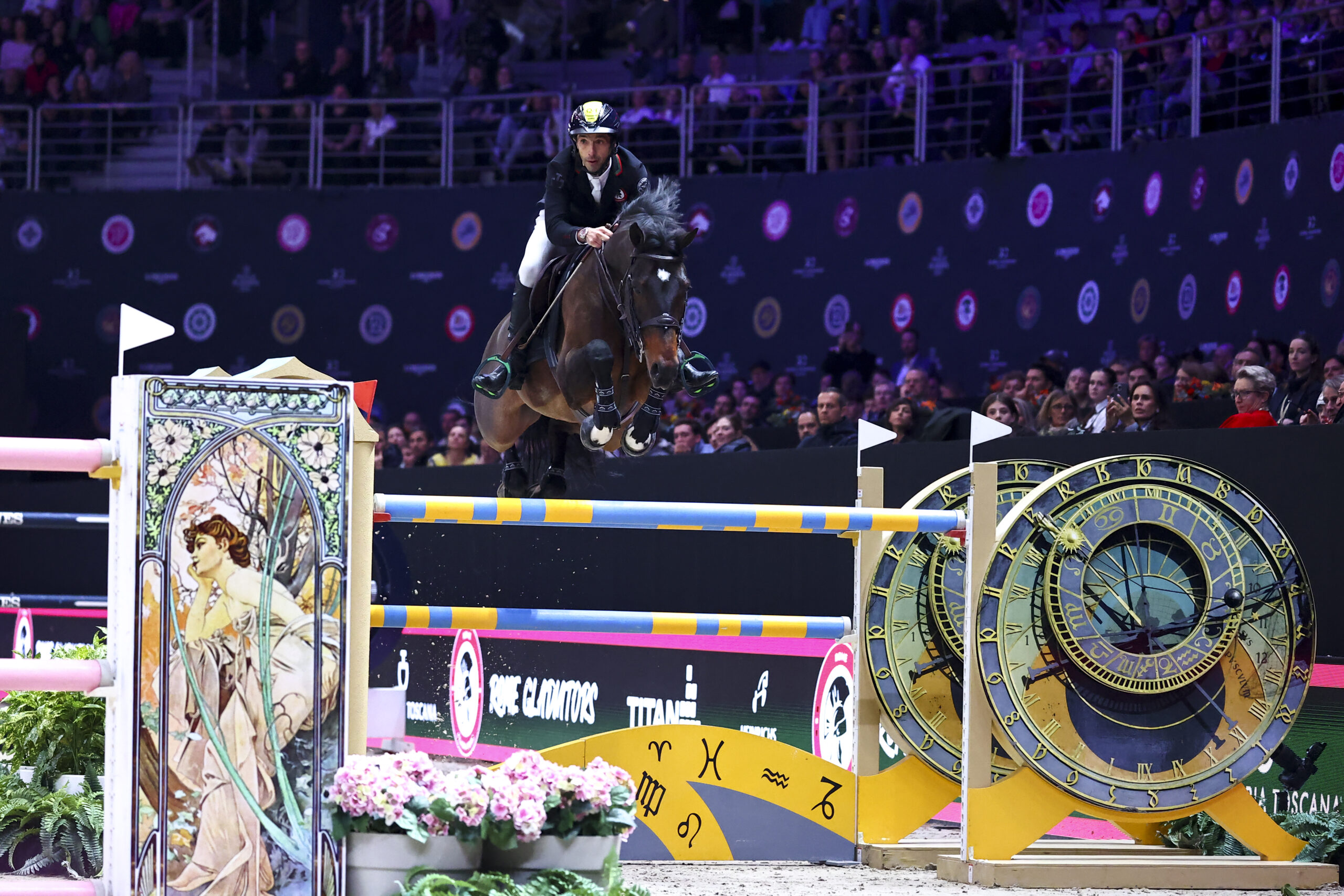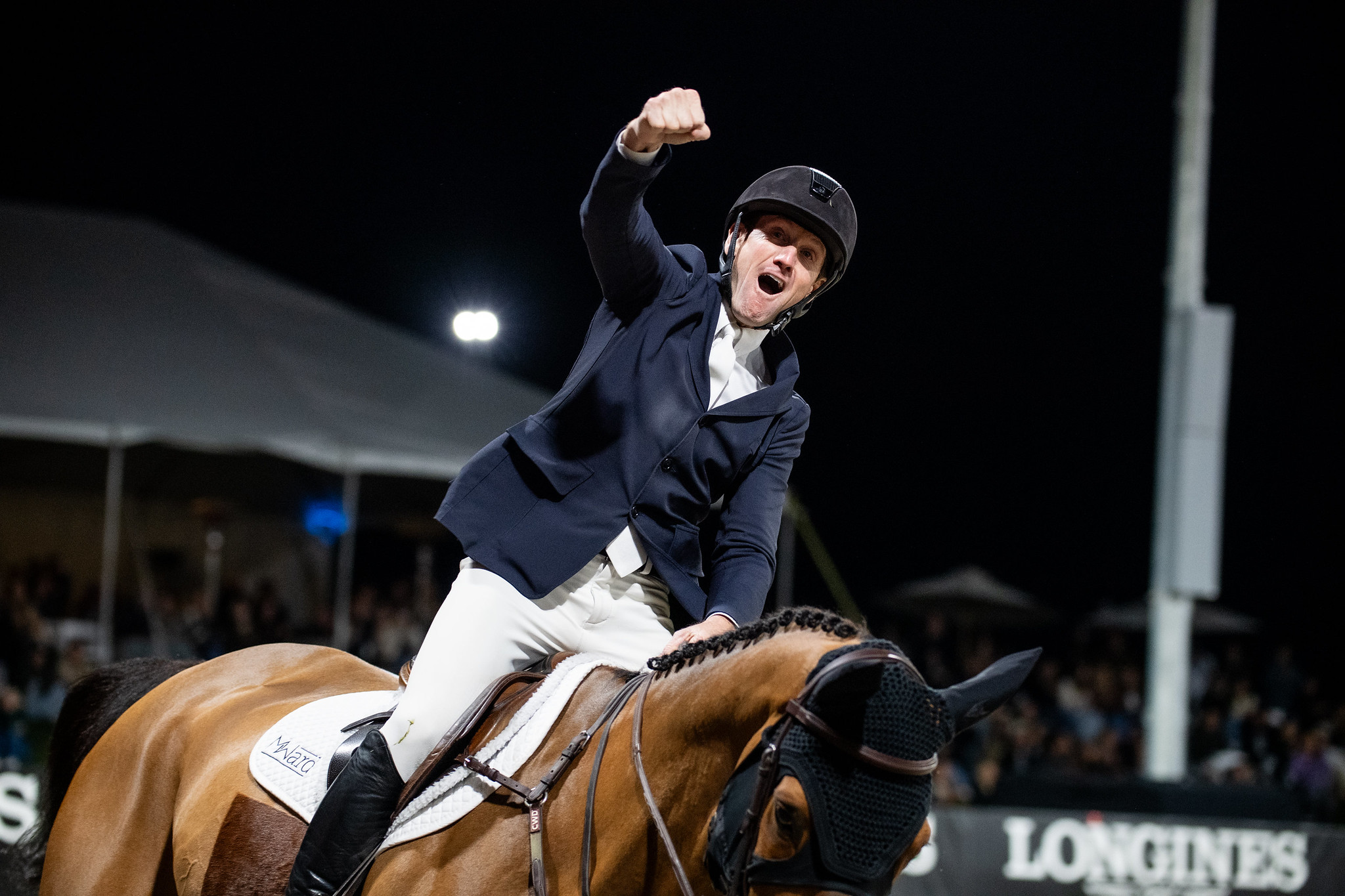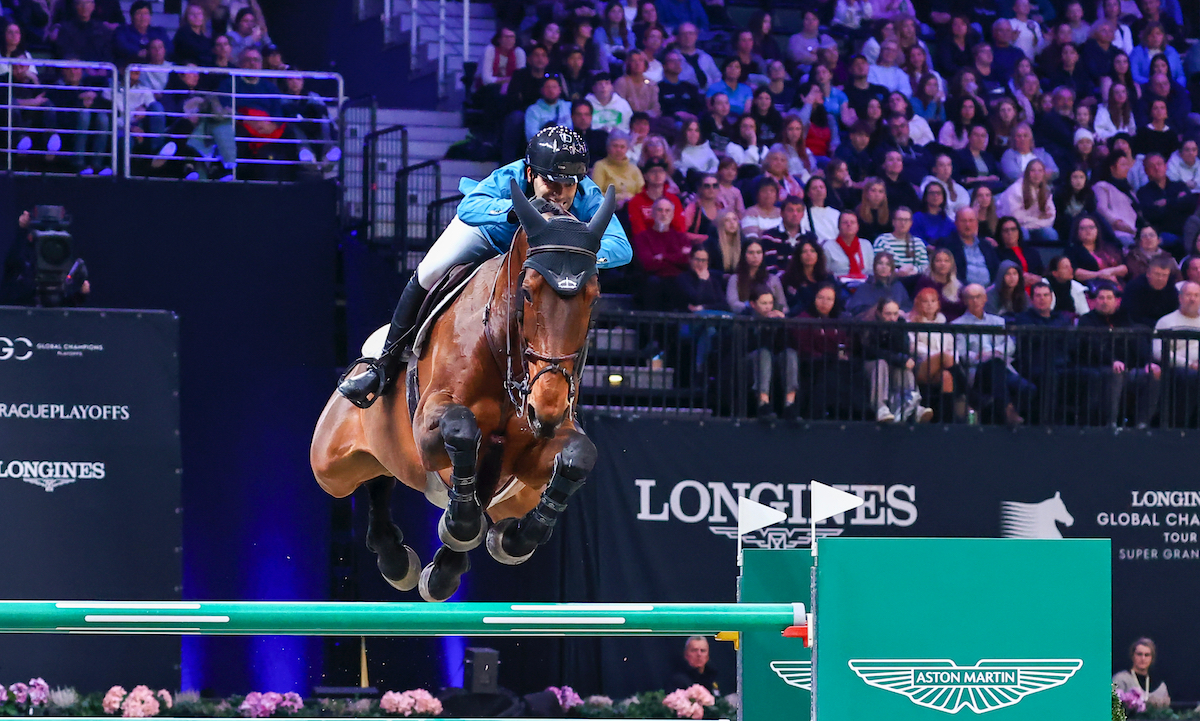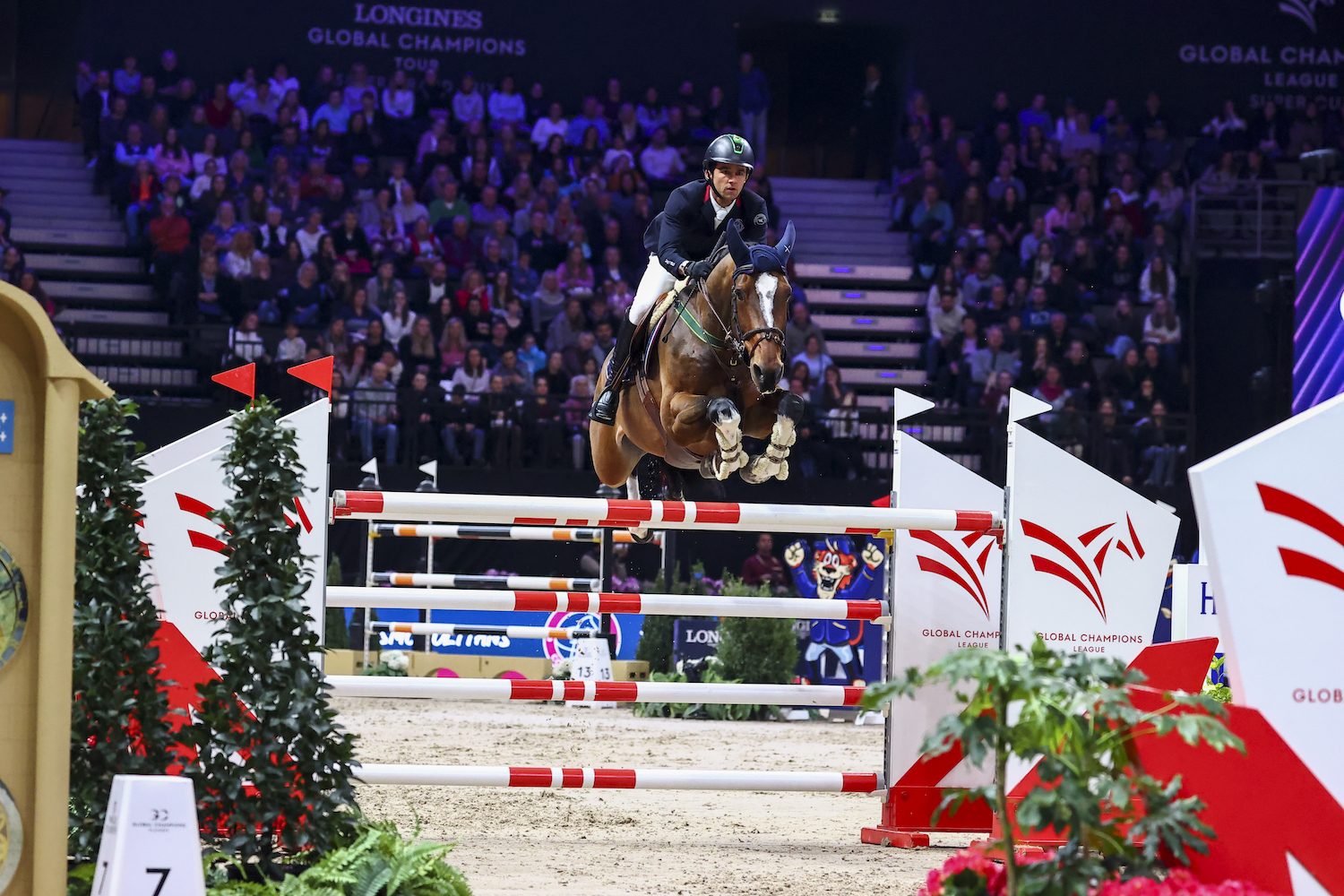Working with young event horses is one of my favorite parts of my training program.
Seeing them develop into confident, willing partners is incredibly rewarding. Whether I’m training one of my own young horses or working with a client’s horse, there’s no better feeling than teaching them the skills and self-assurance they need for their future eventing careers.
As riders, our job is to help get the horse where he needs to be to do his job safely. I mean that both literally and figuratively!
If we practice exercises to control the rhythm, pace, and accuracy while jumping, the horse will become confident and begin to think for himself—a necessary skill for an event horse. Likewise, by positively introducing new cross-country obstacles and teaching him to hack out independently and bravely in unfamiliar locations, we can set him on the right path to success.
Here are some of my go-to exercises and key philosophies that I implement in my program to give these athletes a solid foundation.
Fitness is key
Too often I see young horses that have been asked to do more than they’re capable of doing physically, which can result in scaring them. Long hacks, trot sets, and slow, long canters seem like something we focus on with our upper-level horses, but for the young horses, it’s equally important for different reasons. It makes a huge difference in their long-term soundness, and it helps to expose them to lots of new environments, while also gaining strength for their new careers.
It’s easy sometimes to get stuck in the arena working on simple things like steering, perfecting circles, and impulsion. Sometimes many of these things can be solved simply by getting stronger in straight lines and hill work.
As we introduce jumping too, we don’t want to warm up, start over small fences and feel our young horses start to tire just as we start to increase the height. If they don’t feel confident in their body’s ability to do the job, we have added an unforeseen element to introducing jumping!
Keep it simple

Simple doesn’t always mean boring. I think it’s important to keep most things for the young horses straightforward and easy to understand. I’m a huge proponent of raised trot poles, and while I start by walking over them, I do like doing them on a circle or curve. This adds elements of steering and straightness. The other added benefit is the strength that comes with trotting over raised poles.
I also love grids for young horses. I’ll typically start with all the poles on the ground and then build up from there. One of my favorite exercises is setting six to eight poles set at 9 ½ feet apart on the approach to a fence. This teaches the horses to canter to the base of the fence in a consistent canter. The fences don’t have to be big or overly complicated to have a beneficial effect on the horses and teach them quite a bit.
In the beginning, I’ll often start with just four poles before the cross rail. Generally, the young horses have already mastered a similar skill on the circle, but I will let the green ones trot through the first couple of times if they get a bit worried until they start to understand. It’s not an exercise that needs to be built up to have the effect that we’re looking for like some grids.
For more experienced horses, I will make the first fence a small oxer, to a nine foot pole and then add a single vertical nine feet after. Even if you don’t canter the exercise, it’s great for young horses to help them learn cadence and avoid rushing.
This particular exercise helped my young horse Cape, who was incredibly bold and willing but struggled to keep a good quality canter. He found difficulty in holding himself off the fences and often left a bit past his distances. The exercise helped him to develop his canter and start to balance on his way to the fences and subsequently improved the overall quality of his jump.
Introduce difficult questions, low and simple

I am a huge proponent of introducing skinnies, angles and corners early on in a young horse’s career. I use a very low chevron built that’s solid (so as not to allow them to get tangled if they misunderstand), and I like to add two poles on either side for wings and trot the young horses over it until they get confident.
I also cut some standard poles down and set them quite low until the horses gain confidence. You can set off-set lines and focus on keeping the horses straight and let them figure it out for themselves, as well. Controlling the rhythm, direction, position and speed are our jobs as riders, and it helps teach the horses to be more independent.
Nurture their independence

I love taking my young horses to a local cross-country course and lunging them over fences for their first off-property experience. It’s a great way for them to learn where their feet are and see new things, without the added pressure of a rider.
I find lunging over fences to be hugely beneficial for overly bold horses like Dry Lake, one of my talented four-year-olds. When he had to rely on himself and stay on the circle, he learned to start to look ahead over the fence and not simply worry about getting from one side to the other. Dry Lake really started to think about his footwork and how much easier his job was when he simply curled around the fence rather than getting overly excited.
It’s also a great way to introduce obstacles like banks and water and allow a timid horse to gain self-confidence in the questions. It doesn’t bother me if they make mistakes, put their foot in the ditch, trip up a bank, or stop at the edge and stare off the bank for a few minutes. While sometimes it can surprise us when we’re riding, from the ground they’re less alarming. The horse can then solve the questions on his own and develop his own independence.
Be adventurous

There is so much value in getting your young horse out and about. My youngsters leave the farm nearly once a week once they’re able to steer and stop. I like to bring them out with a friend for a hack in the woods or take them to low-stress local schooling events, even if all they do is get out for a stroll around the showgrounds.
Even if your goal isn’t competitive in nature, too often people wait until they imagine that they’re ready but young horses are really never “ready.” We can prepare so much for what might set off our horses, but we really won’t know until we’re in the situation with the horses. It gives us the ability to see what the next step in our training is.
This story was edited by Emily Daily/Athletux. To learn more about this equestrian marketing firm, visit www.Athletux.com or follow along on social media via Facebook or Instagram.


 January 5, 2021
January 5, 2021 





